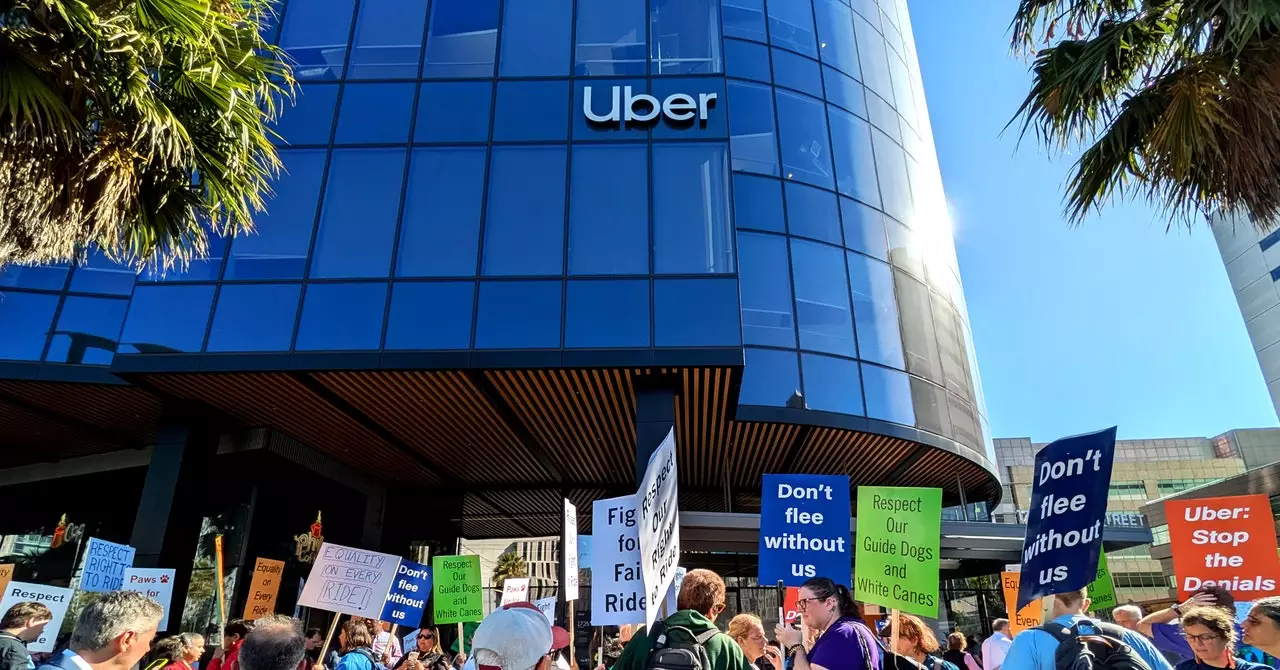The rise of ridesharing services like Uber and Lyft has transformed how individuals navigate urban landscapes. However, a troubling reality has emerged: many passengers who rely on service animals, particularly guide dogs, face significant barriers when using these apps. Michelle Barlak, a public relations manager for The Seeing Eye, a nonprofit organization dedicated to providing guide dogs for individuals with visual impairments, has raised alarming concerns regarding this issue. She notes a troubling rise in reports of ride denials from Seeing Eye dog handlers, with a staggering 83 percent of members in a recent survey by Guide Dogs for the Blind stating they experienced refusals to provide rides to service animal users.
The existing policies of rideshare companies emphasize an essential differentiation between service animals and ordinary pets. To clarify, guide dogs are trained professionals, not merely pets, and therefore, their presence in a vehicle should not incur additional fees typically associated with traveling with a pet. Unfortunately, some drivers remain unaware or dismissive of this important distinction, leading to an atmosphere of misunderstanding and prejudice. Lyft has recently announced plans to introduce a “service animal opt-in feature” by 2025, aimed at improving these conditions. However, this initiative seems insufficient, given that the Americans with Disabilities Act (ADA) mandates access for guide dog users without extra costs or hassles.
The narrative around these service denials is troubling. Michael Forzano, a protester and New York resident, shared his distressing experiences. Despite being equipped with the legally mandated rights as a guide dog user, he faced severe discrimination. He recounted harrowing moments where drivers violently drove away as he approached, dangerously close to harming his guide dog. Such instances highlight glaring inadequacies in how ride services are addressing the needs of visually impaired passengers. These incidents not only reflect broader issues of accessibility but also underscore the urgent need for more effective training of drivers to foster a culture of understanding regarding the responsibility and necessity of service animals.
Barlak’s comments indicate a clear necessity for rideshare companies to not only enhance their reporting systems for service failures but also to invest in comprehensive educational programs for drivers. The fact that Uber did not respond to inquiries about the issue signals a troubling lack of accountability and concern for the lives of passengers like Forzano. It is clear that without systemic changes, the culture of rideshare services will continue to exclude some of the most vulnerable members of our society.
As the debate continues, a pressing question remains: how can ridesharing services truly become inclusive platforms for everyone? It is imperative that organizations, advocates, and the companies themselves embark on a collaborative journey towards accessibility. The legal protections afforded by the ADA are only as powerful as the willingness to enforce them. The time has come for rideshare services to rise above discriminatory practices and meet the needs of individuals who rely on service animals, ensuring that transportation is a right accessible to all.

